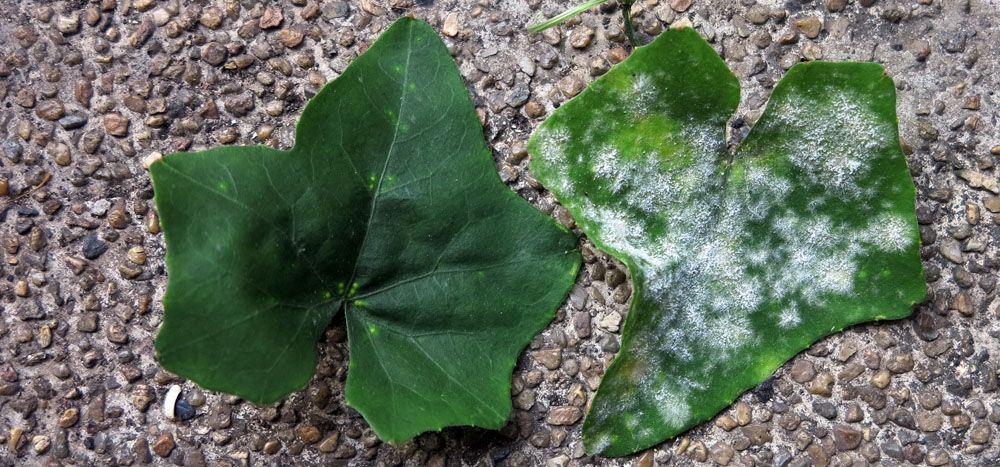
Powdery Mildew
POWDERY MILDEW
Powdery mildew is a fungal infection that can be found all over the United States. It is caused by the fungus Blumeria graminis f. sp. tritici and is primarily an economic issue in the eastern soft winter wheat region. This disease is favored by low soil moisture and high humidity levels at the plant’s surface.
What is means by powdery mildew?
Powdery mildew is a fungal disease that mostly affects plants. Powdery mildew has many different species, and each species attacks a different plant. Cucurbits (squash, melons, pumpkins, and cucumbers), nightshades (tomatoes, peppers, eggplants), roses, and legumes are the most commonly affected plants in the garden. If the infection is severe enough, it has the potential to reduce fruit yield and quality.
Identification of powdery mildew:
Powdery mildew first occurs as a white, powdery spot that may form on both leaves, on shoots, and sometimes on flowers and fruit. These spots gradually spread across the leaves and stems. One of the powdery mildews that affect artichokes, onions, peppers, and tomatoes is an exception: it creates yellow patches on the leaves but little powdery growth. Powdery blight-infected leaves Mildew can slowly turn completely yellow, die, and fall off, exposing the fruit to sunburn. Plants that have been severely infected may have lower yields, shorter production times, and fruit with little flavor.
Life cycle of powdery mildew:
Powdery mildew fungi need living plant tissue to grow. The year-round accessibility of crop or weed hosts is essential for the survival of some powdery mildew fungi. Special resting spores are produced, allowing the species that causes the disease to survive the winter in lettuce, peas, cucurbits, and certain other crops. The majority of powdery mildew fungus appear on the surface of the afflicted plant portion as thin layers of mycelium. Spores, which are the most common mode of dispersion, account for the majority of the white, powdery growth visible on the plant’s surface and are produced in chains viewable with a hand lens; spores of downy mildew, on the other hand, grow on branched stalks that resemble miniature trees. Wind transports powdery mildew spores to new hosts. Despite varying humidity necessities for germination, all powdery mildew species can germinate and infect without free water. Water on plant surfaces kills spores of some powdery mildew fungi and inhibits germination for extended periods. Powdery mildew development is generally favored by moderate temperatures (60° to 80°F) and shady conditions. Intense temperatures (above 90°F) and direct sunlight are toxic to spores and fungal growth.
Damages by powdery Mildew:
Powdery Mildew usually grows on the tops of the leaves, but it can also grow on the undersides. Young foliage is the most vulnerable to damage. Some leaves may twist, break, or become disfigured as a result of the fungus. Powdery mildew is a fungus that can infect a wide range of plants. The plant weakens as the virus spreads, and the leaves may appear yellow or brownish, dry out, or curl up, twist, or distort. Flower and fruit production will also decline, and this disease can have a significant impact on harvests. Powdery mildew-infected leaves may gradually turn yellow, die, and fall off, exposing the fruit to sunburn. Powdery mildew can cause leaves to twist, buckle, or distort on some plants. Powdery mildew fungi do not typically grow on vegetable fruits, though pea pods may develop brownish spots. Plants that have been severely infected may have lower yields, shorter production times, and fruit with little flavor.
Control of Powdery Mildew:
While removing and killing all diseased plants would be ideal, it is not particularly feasible. Few gardeners, however, are prepared to sacrifice their peonies or squash for every powdery mildew outbreak. Fortunately, there are less extreme steps you may take to get rid of this troublesome fungus in your yard.
Remove Infected Portions of Plants:
To begin, use plant clippers to extract or prune the parts of your plants that have viewable Powdery Mildew. Remove any affected leaves from the plant and do not compost them (which can allow the spores to spread). To help prevent the spread of the disease, clean your hands and clean your clippers with alcohol wipes.
Apply a Fungicide:
There are numerous fungicides available; look for one that contains potassium bicarbonate, neem oil, sulfur, or copper. You can also make home remedies, such as one made from baking soda and one made from milk, to help prevent powdery mildew from forming in the first place. Reapply fungicides every seven to fourteen days for continuous protection, and make sure to follow the instructions on the label for both application and the waiting period before harvesting fruits and vegetables. While fungicides will not cure Powdery Mildew, they can help prevent the fungi from spreading to other leaves or plants.
Biological Fungicide:
Biological fungicides (such as Serenade) are commercially available beneficial microscopic organisms formulated into a product that kills fungal pathogens when sprayed on the plant. Serenade contains a bacterium, Bacillus subtilis, which helps to prevent powdery mildew from infecting the plant. While this product kills the powdery mildew organism and is nontoxic to humans, pets, and beneficial insects, it is ineffective in controlling this disease as oils or sulfur.
